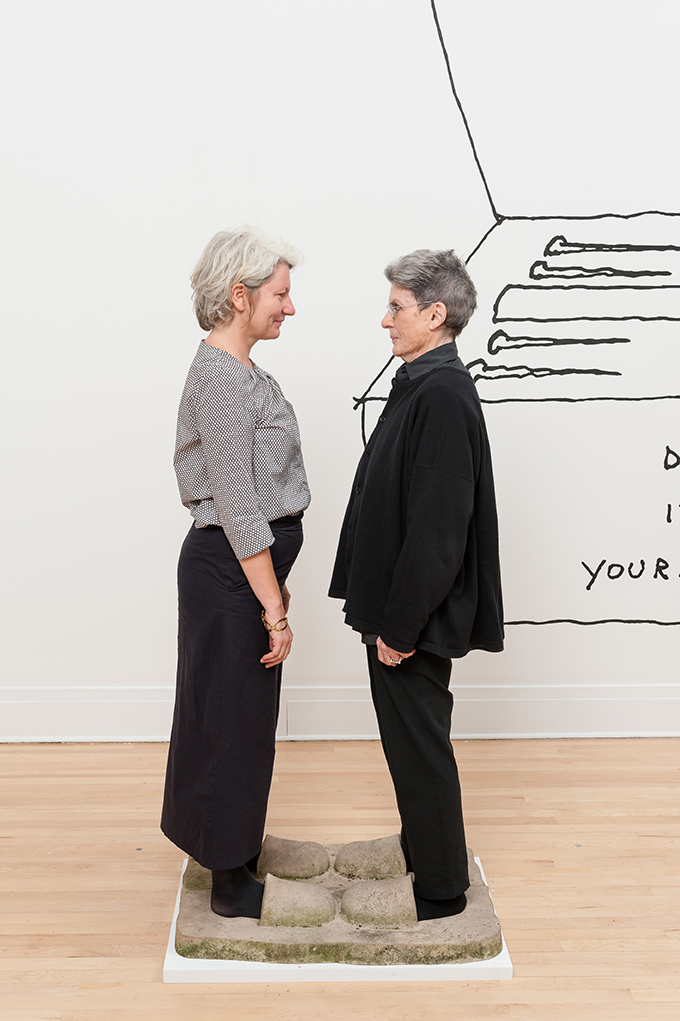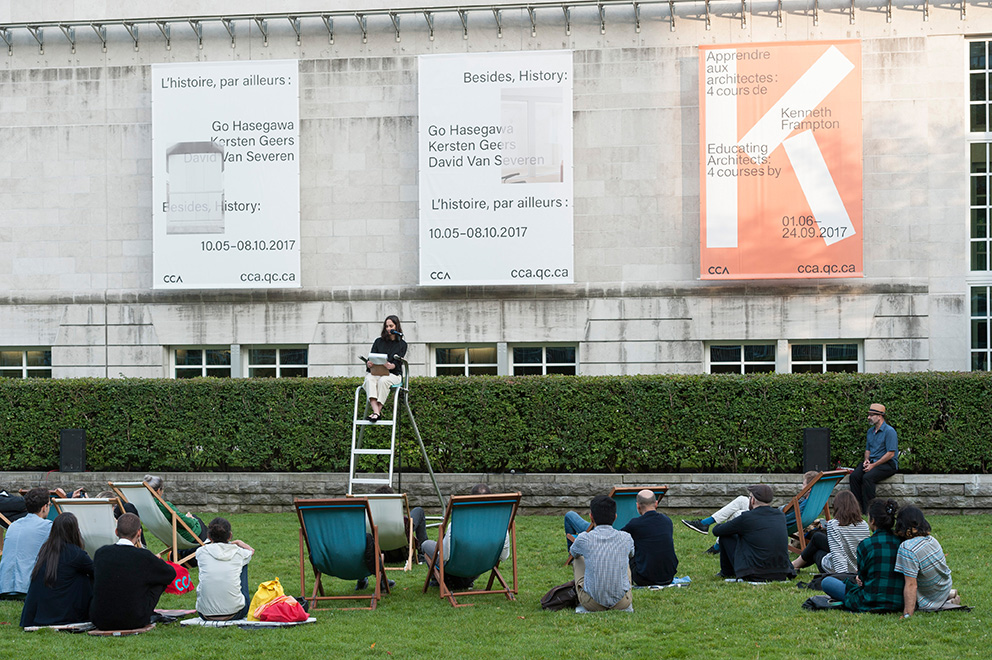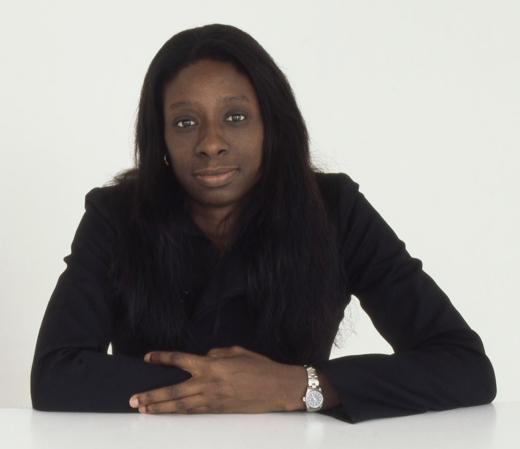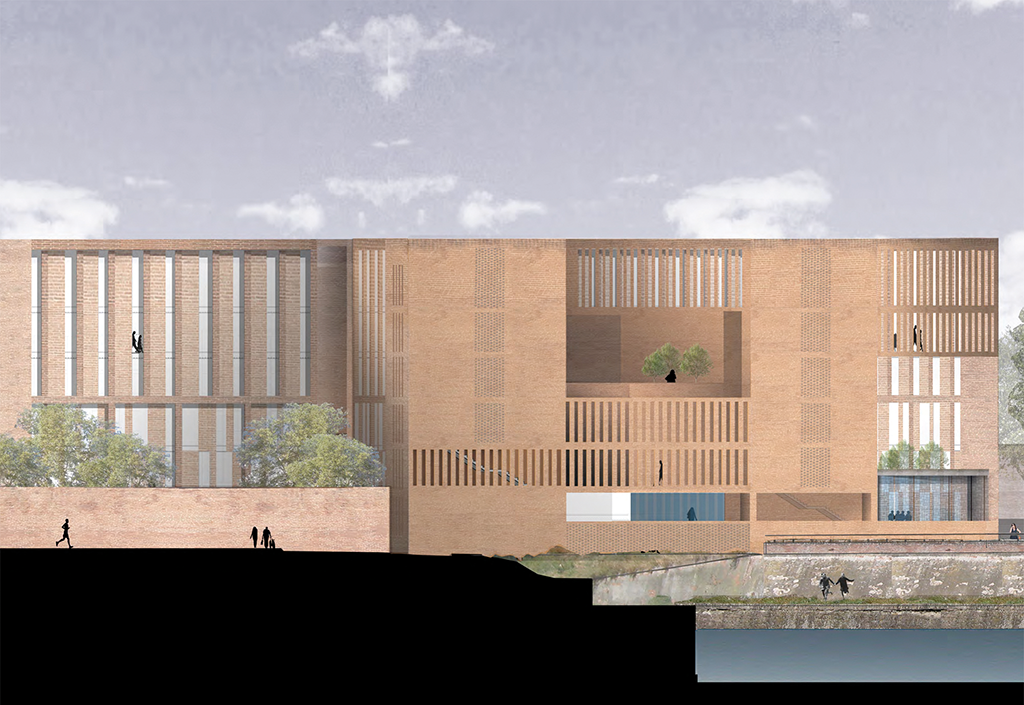La parole à Giovanna Borasi, conservatrice en chef du CCA
Présentée dans le numéro 424 de AA, l’architecte et philanthrope canadienne Phyllis Lambert a fondé le Centre canadien d’architecture (CCA) en 1979. Giovanna Borasi, l’actuelle conservatrice en chef du CCA, revient sur les missions de ce centre créé par la maître d’ouvrage militante qui, encore aujourd’hui, poursuit son combat : la défense du patrimoine et de l’architecture de sa ville natale, Montréal. Tribune.

Giovanna Borasi (à gauche), face à Phyllis Lambert (à droite), faisant l’expérience Scarpe vincolanti / Chaussures unies, un projet qui oblige, mais encourage également, les rencontres en face à face. Il a été conçu en 1975 par Alessandro Mendini, Davide Mosconi, Nazareno Noia et Franco Raggi pour les ateliers sur le corps par Global Tools, et ea été présenté dans le cadre de l’exposition L’architecte autrement, au CCA, en 2015.
_
Maybe we can understand generosity as curiosity, as insisting to share that curiosity, as making a place for others to be curious. Curiosity in this sense is something to be protected, even a luxury. It doesn’t solve problems; it poses untimely questions, charts new lines of inquiry, allows the curious to land somewhere unexpected.
You hear something often from Phyllis Lambert: I did it—collected these certain drawings, documented Montreal’s characteristic greystone buildings, advocated for the city’s preservation—because I wanted others to see, to understand something they and everyone else were missing. She has consistently dared to impose her curiosity on others. The Canadian Centre for Architecture is the best example of this fortunate tendency.
The CCA operates through an institutional framework that demands and underwrites curiosity, both our own and from our collaborators. We have the space to wonder: How can we—from our perspective within architecture, from our outpost in Montreal—address the most pressing questions in contemporary culture and society? How do we proceed in these explorations? How do we anticipate what will be important, rather than just react to current conditions? In this way, curiosity could also be a way of taking responsibility, of taking a risk.
The framework we work within is articulated as a series of questions we’ve asked ourselves. What about the environment? Can we expect technology to solve our problems? What about health? Can we propose alternatives to the prevailing belief that health is a private, moral issue? What happens after “progress” fails (or, sometimes worse, succeeds)? How do we experience the built environment in terms beyond the visual? What tools do individuals have to influence the forms and power dynamics in the city? And, most of all, what are the assumptions that shape how architects work? Can we imagine other ways of being an architect? We set an agenda to point to something latent, off, tense, or unacknowledged, in order to create a platform for the discussions we would like to see happen. Generosity can create more generosity.
The institution turns its collective attention to investigating these questions, through all the tools we have. These tools were cultivated purposefully from the beginning. When Phyllis created the CCA, she assembled all the parts she identified as necessary to make architecture a public concern. Before opening to the public, the CCA gave itself plenty of time—ten years—to learn to do what it wanted to do. Exhibitions in the temporary office’s reception area were practice runs for processing newly arrived archives, conserving objects, writing labels, and finding audiences. There were conferences, lectures, publications, invited researchers.
Today, the CCA is pushing more and more for these parts to infect and inflect one another, to become greater than their sum. The collection is put to use in research; research drives exhibitions and books; exhibitions reach a wider audience in public programs and online; public programs create a conversation that feeds back into what we research; exhibitions and publications reshape the way we understand architecture and what it can do, and therefore what we collect, and what we research. Over and over, simultaneously and not always in that order.

Parc Baile du CCA © Centre Canadien d’Architecture
In recent years we have also become especially curious about our own name, another seed that Phyllis planted, again very intentionally. The CCA is a centre, not a museum. It’s a place that collects—objects and archives, yes, but especially figuratively, as in a centre of gravity. It pulls people, ideas, and things to Montreal that may not otherwise visit here. It has a strange status in the city, as a site, but also somehow an idea (we hope). At the same time, we try to make ourselves available more broadly, through our website and through projects like CCA c/o, a series of temporary initiatives that are anchored to locations around the world and define new thematic explorations through encounters with these different contexts. We are counting on the fact that there are others out there who are asking themselves the same questions we are.
Another way we’re negotiating this right now is through a strategic project we call Find and Tell, where we invite experts—not only scholars, but architects and other people with intelligent viewpoints— to revisit the collection from a contemporary perspective andto make an argument through the selection and interpretation of a body of material from our collection, which is then made accessible online. This approach is part of a bigger shift. Although we are always improving and questioning how we use our first building in Montreal, we don’t want to expand it. We’ve been investing in what we’ve called our second building: our website and this other presence, CCA elsewhere. Now that we have the second building, we have to occupy it. We ask ourselves: How do we reactivate the collection from a contemporary perspective, and then share this insight? If we do something and it doesn’t live in the second building, what is the point? If digitization, for example, is not an automatic action, or a purely technological problem, how do we move forward? If the archive is a tool, what is the thing we are making with that tool?
We’re not sure what the result will be, what exactly we’re making. Of course, the risk of curiosity is being misunderstood. We have to take a position—to dive into something that seems premature in order to arrive at something else that resonates with even more urgency. As it has developed, as it enters its fortieth year, the CCA is an institution that conserves our ability to be curious. Especially today, we don’t take this for granted.
L’article sur Phyllis Lambert, fondatrice du CCA, est à retrouver dans le numéro 424 de L’Architecture d’Aujourd’hui, disponible en librairie et sur notre boutique en ligne.



